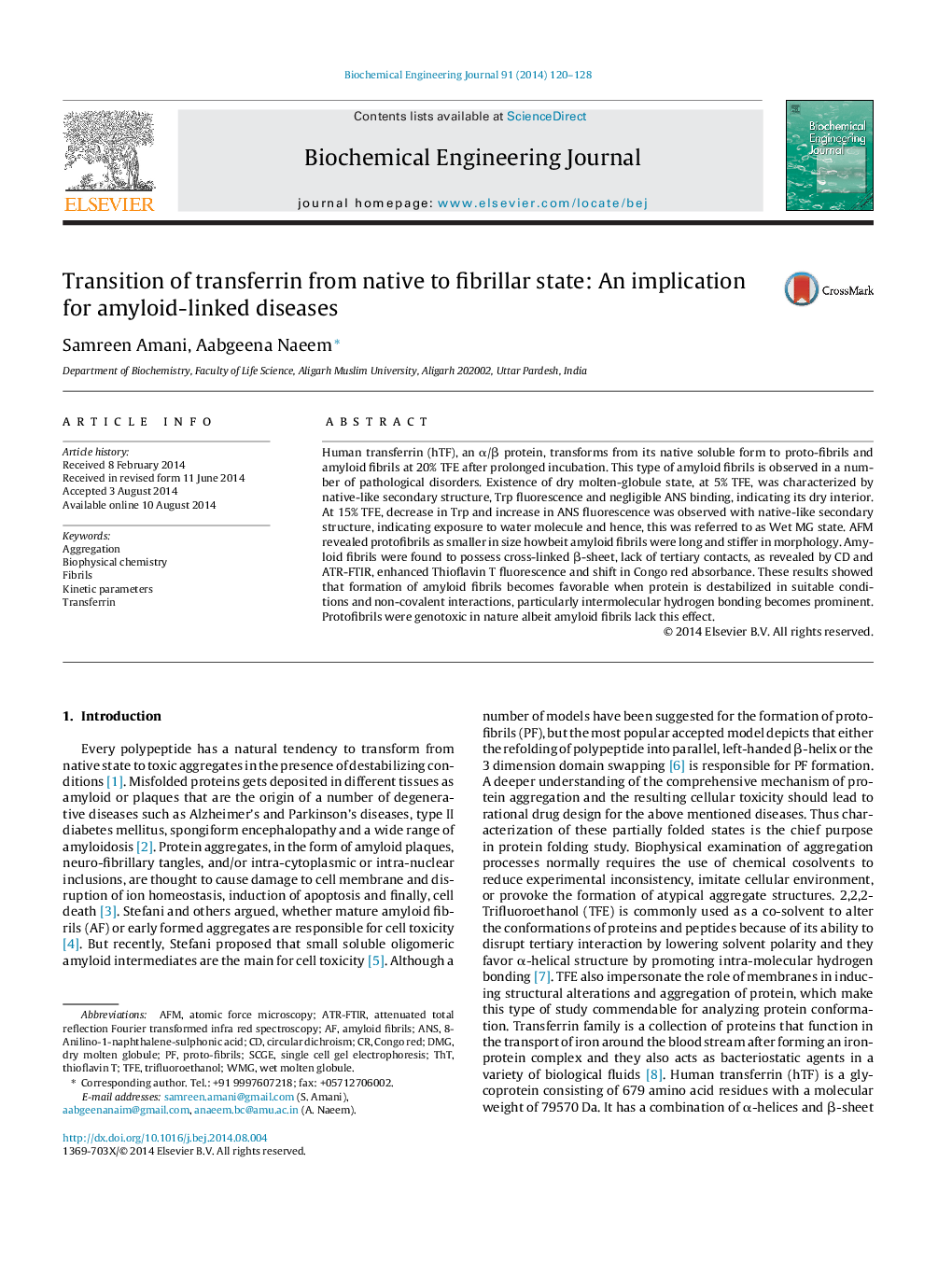| کد مقاله | کد نشریه | سال انتشار | مقاله انگلیسی | نسخه تمام متن |
|---|---|---|---|---|
| 3119 | 151 | 2014 | 9 صفحه PDF | دانلود رایگان |
• Changes in hTF were monitored upon incubation with varying concentration of TFE.
• 5%, 15% and 20% TFE results in DMG, WMG and aggregates after 4 h incubation.
• Long incubation of aggregated species resulted in proto-fibrils and fibrils.
• AFM revealed the morphology of protofibrils and fibrils.
• SCGE confirmed toxic nature of proto-fibrillar structure.
Human transferrin (hTF), an α/β protein, transforms from its native soluble form to proto-fibrils and amyloid fibrils at 20% TFE after prolonged incubation. This type of amyloid fibrils is observed in a number of pathological disorders. Existence of dry molten-globule state, at 5% TFE, was characterized by native-like secondary structure, Trp fluorescence and negligible ANS binding, indicating its dry interior. At 15% TFE, decrease in Trp and increase in ANS fluorescence was observed with native-like secondary structure, indicating exposure to water molecule and hence, this was referred to as Wet MG state. AFM revealed protofibrils as smaller in size howbeit amyloid fibrils were long and stiffer in morphology. Amyloid fibrils were found to possess cross-linked β-sheet, lack of tertiary contacts, as revealed by CD and ATR-FTIR, enhanced Thioflavin T fluorescence and shift in Congo red absorbance. These results showed that formation of amyloid fibrils becomes favorable when protein is destabilized in suitable conditions and non-covalent interactions, particularly intermolecular hydrogen bonding becomes prominent. Protofibrils were genotoxic in nature albeit amyloid fibrils lack this effect.
Figure optionsDownload as PowerPoint slide
Journal: Biochemical Engineering Journal - Volume 91, 15 October 2014, Pages 120–128
